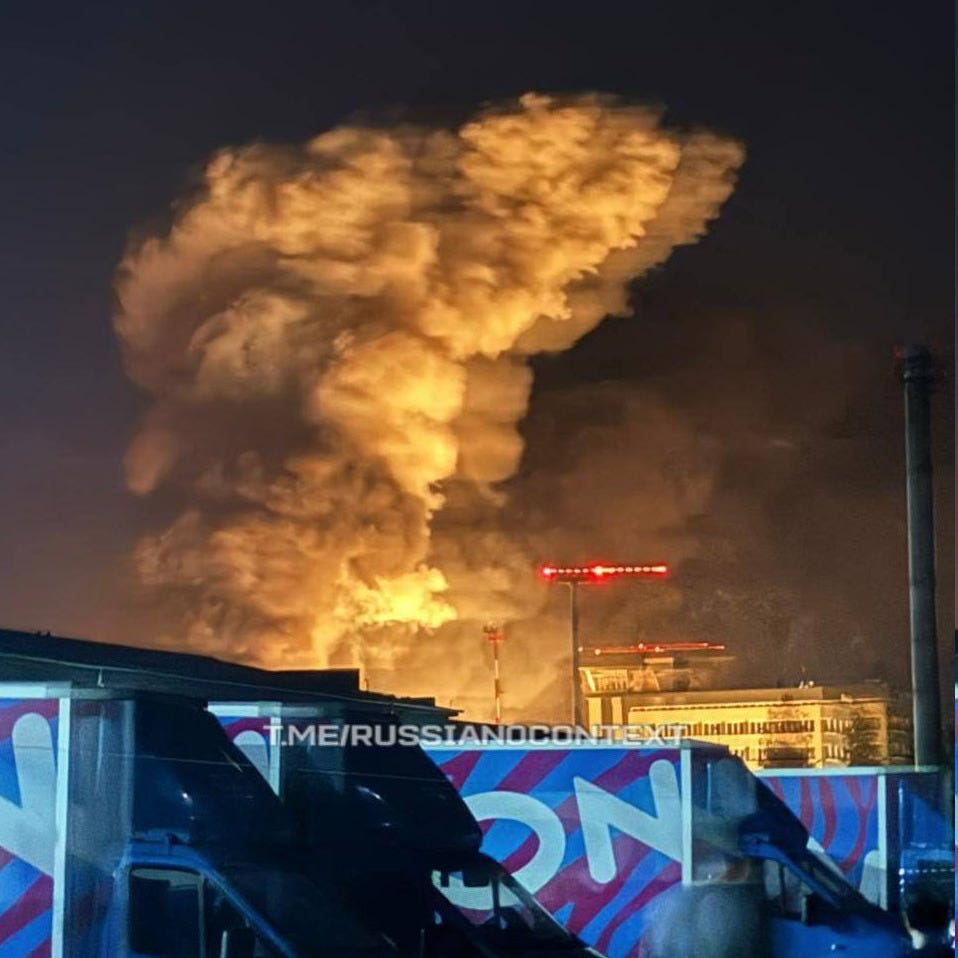The Iskander Has Become One Of Russia's Deadliest Deep Strike Weapons. Now Ukrainian Troops Are Hunting the Launchers, the Crews—and Warehouses Full of Missiles.
The first Iskander launcher kill occurred on June 5.
The Iskander ballistic missile is one of Russia’s best deep-strike weapons. Cued by drones, the four-ton, ground-launched Iskanders pummel Ukrainian training bases, command posts, airfields and air-defense batteries.
An Iskander is almost impossible to intercept. Which is why it’s such a big deal that, on June 5, Ukrainian forces blew up at least one Iskander launcher in Bryansk Oblast, around 50 miles from Ukraine’s northern border with Russia.
It’s Russia’s first loss of an Iskander launcher in the 40 months since it widened its war on Ukraine. (See video above.)
The Ukrainian general staff in Kyiv announced the hit the same day. “Today, units of the armed forces of Ukraine, in cooperation with the Security Service of Ukraine and other components of the defense forces, launched a missile strike on the area of concentration of a unit of the Russian missile forces,” the general staff noted.
The Iskander, reportedly from the 26th Missile Brigade, was prepared “to strike one of the Ukrainian settlements,” the general staff noted. “Probably Kyiv.”
“Thanks to effective reconnaissance and as a result of the coordinated work of units of the armed forces and the Security Service of Ukraine, the targets were successfully hit. One Russian missile launcher detonated, and two more were most likely damaged.”
It took three weeks for independent analysts to confirm the kill. An official death notice for an Iskander crewman, Sr. Lt. Nerozin Ivan Vitalievich, cinched it.
The Ukrainians have been desperate to degrade the Iskander batteries, which oversee around 160 launchers. Some of the most damaging Russian raids involve the Mach 6, precision-guided missiles, which range as far as 310 miles.
On March 1, for example, a Russian Orlan drone winged 80 miles behind the front line in eastern Ukraine and took up station over Dnipropetrovsk Oblast. There’s a training base in Dnipropetrovsk that’s normally staffed by the Ukrainian army’s 168th Reserve Battalion. At the time, the battalion was reportedly hosting troops transferring out of the army’s newly organized 157th Mechanized Brigade.
Cued by the drone, an Iskander streaked in. Ukrainian war correspondent Yuriy Butusov claimed 32 soldiers died and another 100 were wounded when the 168th Reserve Battalion’s training grounds exploded.
Ukrainian negligence aided the raid. Critically, there was no camouflage netting. No earthworks to shelter the troops as they milled about in broad daylight. No local air defenses to swat down Russian drones. Base commanders were habitually “indifferent” to their trainees’ vulnerability, one soldier who spent some time in Dnipropetrovsk told Butusov.
But the Iskander’s speed, accuracy and payload make it uniquely dangerous—and the Russians are getting better at finding targets for them.
Drones and leaks
“The source of the recce element is likely twofold—depending on the target, drones and leaks/OPSEC failures,” commented Sam Cranny-Evans, an analyst for the Royal United Services Institute in London. “For some time, Ukraine held recce drones at bay with air-defense, now it is running low [so] they seem to have an easier time finding targets within [Iskander] range.”
“The second recce source seems to be leaks or informants and OPSEC,” Cranny-Evans added. Put simply, “Ukraine still has Russia-sympathizers who may be sharing info with Russian forces.”
The Iskanders got even more dangerous when the Russians apparently began deploying the launchers with brigades instead of divisions. “This likely means Iskander is much more available for dynamic targeting and is being used with fewer restrictions,” Cranny-Evans said.
Desperate to break the Russians’ Iskander kill-chain, the Ukrainians aren’t just targeting the launchers—they’re also targeting the logistical links in the chain. On the same day Ukrainian forces blew up at least one Iskander launcher in Bryansk, they apparently also struck a warehouse at the Bryansk airport storing fresh Iskander rounds.
Read more:
Ukrainians Built an Invisible Wall of Radio Jamming Along Their Border. Any Russian Missiles Flying Through It Went Wildly Off Course.
After some desperate trial and error in the months following Russia’s wider invasion of Ukraine in February 2022, Ukraine’s 10-person Night Watch electronic warfare team—volunteers working mostly outside the strictures of the Ukrainian government—devised an effective electronic defense






